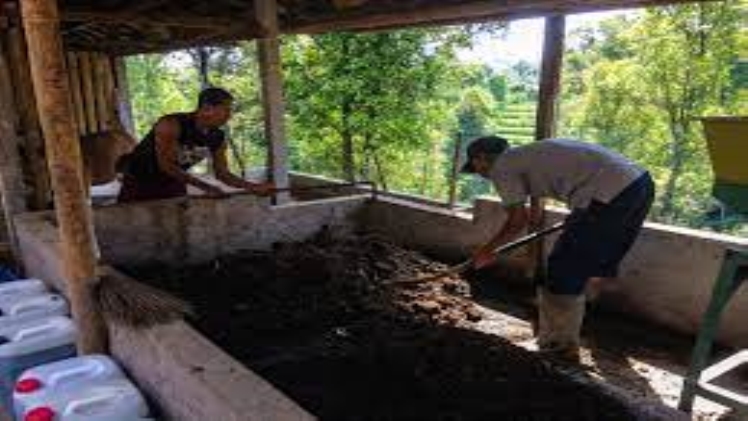A Soil Primer with Sustainable Management Strategies and Unit 1.7, Making and Using Compost) 1. Both compost and animal manure are sources of organic matter for the soil ecosystem and provide benefits for soil, including:
- Nutrients for crops b) Increased soil organic matter content c) Increased soil cation exchange capacity (CEC) d) Habitat and food for beneficial soil microbes e) Increased soil aggregates 2. Compost application a) Common annual application rates: ~4–5 tons/acre/year on field scale; 10–12 tons/acre/ year on garden scale (cropping dependent) b)
- The nutrient contribution (N:P:K) of compost varies greatly, depending on the raw materials of the compost, and how long and under what conditions it matured. Check with the supplier or have a compost nutrient assessment done to determine nutrient levels and proportions.
Compost C:N: Compost with C:N of less than 20:1 can provide N to the following crop, but compost with C:N greater than 20:1 can immobilize the N, making it less available to the crop. This depends greatly on the raw materials, as well as the compost’s maturity. Here, too, check with the supplier or have a compost nutrient assessment done. d) Application timing: Ideally, nutrient release should coincide with crop demand.
However, this is difficult to control in organic systems because it is a biologically-driven process, dependent on microbes breaking down the organic matter. i. Compost is generally applied at the start of the season or when planting new crops during the growing season ii.
Compost may be applied midseason as a sidedress (applied adjacent to or between rows of growing crops), although it needs to be incorporated into the soil surface iii. Depending on the quality of the compost, particularly the C:N, it may be an inefficient source of N in the short term iv. Release of N may last 6 weeks to several months following incorporation, depending on the C:N, soil characteristics, and environmental conditions (e.g., weather). Up to 10–15% of the compost N is released the first year. 3. Other considerations of compost use a)
Last speech
Requirements for on-farm compost production (see Supplement 2, Field-Scale Compost Production: A Case Study in Unit 1.7). The feasibility of making compost on the farm (versus “buying in” compost from a commercial source) depends on the farm or garden scale and the overall labor and economics of the operation. i. Labor and knowledge: On-farm compost production requires labor inputs and knowlege of compost production techniques to both build and monitor compost piles

